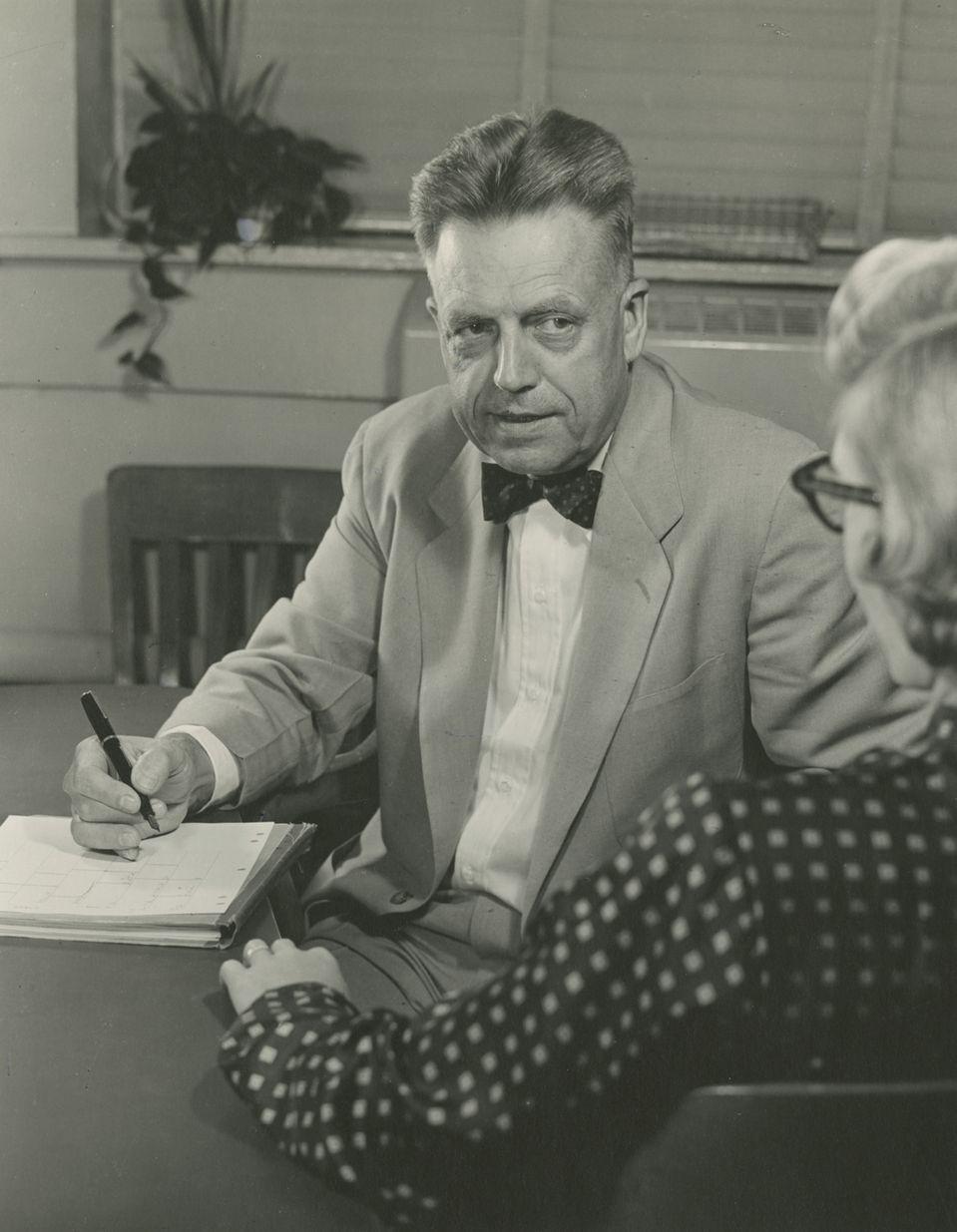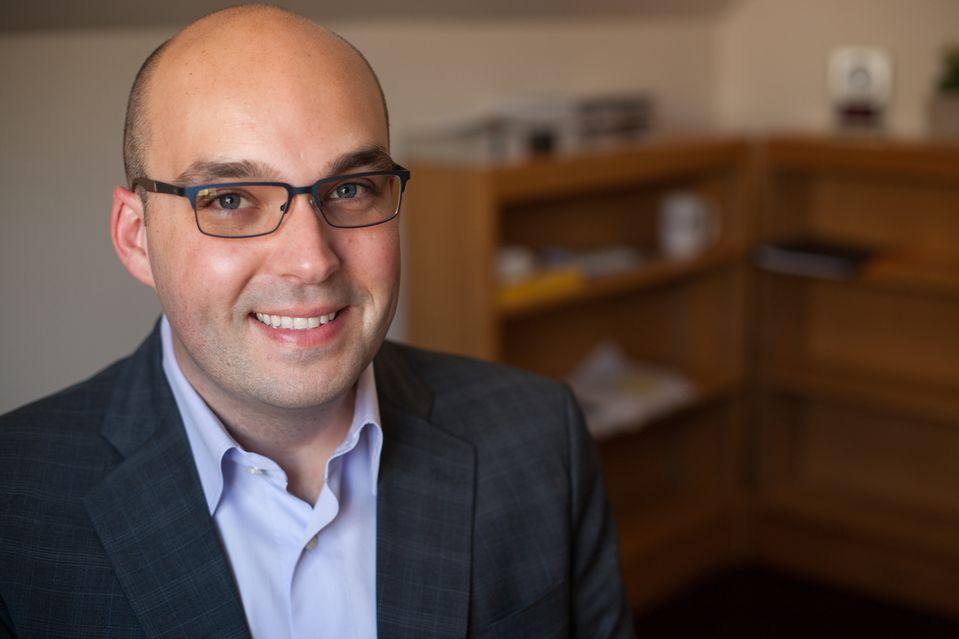Introduction: This article is translated from The Wall Street Journal's article "Three Findings That Changed the Way We Think About Sex" by Elizabeth Bernstein. It introduces several influential findings on human sexual behavior and desire by the Kinsey Institute. Thanks to Mingmo for proofreading.
"At what age did you first have sex?" "Do you often sleep naked when the weather is warm?" "Do you have wet dreams?"
For 75 years, the Kinsey Institute at Indiana University has been dedicated to studying human sexual activity and continuously asking people these questions.
The institute was founded in 1947 by the renowned sexologist Alfred Kinsey. He began studying human sexual behavior many years before that when the university hired him to teach a course on marriage and family. In preparation for the course, he searched for scientific research on human sexual activity. However, he found very little, so he conducted his own research and, in the process, changed the way we think about human sexual life.
Dr. Kinsey and his researchers' survey questionnaire contained about 350 questions, and they traveled across the United States, interviewing thousands of Americans about their sexual lives. This research laid the foundation for two milestone publications: "Sexual Behavior in the Human Male" published in 1948 and "Sexual Behavior in the Human Female" published five years later.

Alfred Kinsey interviewing a participant in 1953. Photo by William Dellenback/Trustees of Indiana University/Kinsey Institute
Since then, researchers at the Kinsey Institute, including anthropologists, biologists, sociologists, and psychologists, have studied various aspects of human sexual activity, from reproduction and sexual health to homosexuality and gender development. One of the earliest findings by Kinsey researchers was that sexual orientation is a continuum rather than a binary. They also held influential academic conferences on HIV and AIDS in the 1980s. Recently, they have begun longitudinal research on the impact of the COVID-19 pandemic on human sexual behavior and intimate relationships. (Interesting finding: During this time, one-fifth of people have tried something new sexually.)
Justin Garcia, the executive director of the Kinsey Institute, said, "We are trying to understand something that millions of people experience every day and uncover its mysteries."
This week, the Kinsey Institute celebrates its 75th anniversary. As an occasion, let's take a look at three interesting discoveries by researchers at this institute regarding human sexual activity.
Human Sexual Activity Spectrum is Not Narrow#
Dr. Kinsey's research showed that human sexual life is much more diverse than previously imagined. Before his research findings came out, it was commonly believed that a normal and healthy sexual lifestyle involved married heterosexual intercourse about once a week in the missionary position.
It was also believed that sexual arousal was linear, meaning that once something aroused us, we would proceed to the next step. If that didn't happen, then there must be something wrong with us—either sexual dysfunction or lack of effort.
During the 1990s, Kinsey researchers found that sexual arousal is controlled by two separate biological systems, not just one. One is the excitatory system, and the other is the inhibitory system. The excitatory system is like the accelerator pedal, speeding us up, while the inhibitory system is like the brake pedal, slowing us down. These two systems are referred to as the Dual Control Model of Sexual Response—they each have their own triggers and work independently. Some things can stimulate sexual desire, such as kissing, while others can dampen desire (imagine your child walking in).
"Essentially, we are always balancing between 'let's have sex!' and 'now is not the right time!'" said Erick Janssen, a senior researcher at the Kinsey Institute and a professor of human sexual activity research at KU Leuven in Belgium. He also contributed to the earliest research on this result.
These findings and extensive related research indicate that what can stimulate or inhibit sexual interest varies from person to person and is influenced by our individual traits, physiological conditions, and personal experiences. Moreover, these factors can change over time, Dr. Janssen said. (If you want to find out about your own accelerator and brake, you can try Dr. Janssen's online survey questionnaire.)
Understanding these factors can help us have a better sex life and intimate relationships. "If you can identify your inhibitory and excitatory factors, you can adjust and maintain the environment that arouses you," Dr. Janssen said, "and it can also help you better understand your partner."
Almost Everyone Fantasizes About Sex#
During the time when Dr. Kinsey first started his research, the prevailing belief about sexual fantasies was Freudian: happy people don't have sexual fantasies.
Oh boy, that was really wrong.
Since 2014, a social psychologist and researcher at the Kinsey Institute, Justin Lehmiller, has been conducting a comprehensive study on sexual fantasies, which is considered the most comprehensive study to date. In this study, he defined sexual fantasies as mental images that sexually arouse individuals while they are awake. He found that 97% of respondents reported having such mental images.
Dr. Lehmiller said that sexual fantasies are remarkably similar across people around the world. There is also significant overlap in the content of sexual fantasies between men and women, and both genders reported that their sexual fantasies include emotional components.
During the COVID-19 pandemic, people have had more sexual fantasies, Dr. Lehmiller said, and the reasons for sexual fantasies are often not for self-pleasure but to relieve stress, relax the mind and body, shift attention, or alleviate feelings of loneliness. Many people also share their sexual fantasies with their partners. Compared to those who do not share their sexual fantasies with their partners, those who do tend to have better sex lives.
"Sexual fantasies are a healthy and adaptive part of human sexual activity," Dr. Lehmiller said, "and for many people, they may be a lifeline to meeting deeper needs."
The Destination Is the Journey Itself#
The Kinsey researchers have conducted about 100 studies on orgasms. They found that men do not always have orgasms during sexual activity, which contradicts even Dr. Kinsey's own assumptions, while women have more orgasms than previously believed. Of course, orgasm experiences can also vary, especially as we age. This is normal.
Dr. Justin Garcia, the executive director, said that in our sexual experiences, connection is the most important part.

Justin Garcia, Director of the Kinsey Institute. Photo by IU Studios
Other studies have found that female sexual pleasure has different triggering mechanisms. "All the little details can make a difference—environment, emotions, kissing, touching, and massaging," said Dr. Garcia. Both men and women pretend to enjoy sex. The reasons men pretend to enjoy it are usually because it would be awkward to lose sexual desire, while women often pretend to please their partners.
Although orgasm is certainly highly related to sexual satisfaction, research shows that people engage in sexual intercourse for many other reasons, Dr. Garcia said, from wanting to experience pleasure themselves to wanting their partner to feel good. One reason that is always present is, "I want to express my love."
"The beauty of our sex lives is that they are a journey," Dr. Garcia said, "and we should enjoy the scenery along the way rather than being fixated on reaching the final destination."